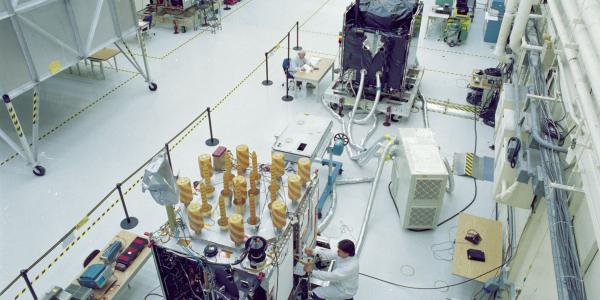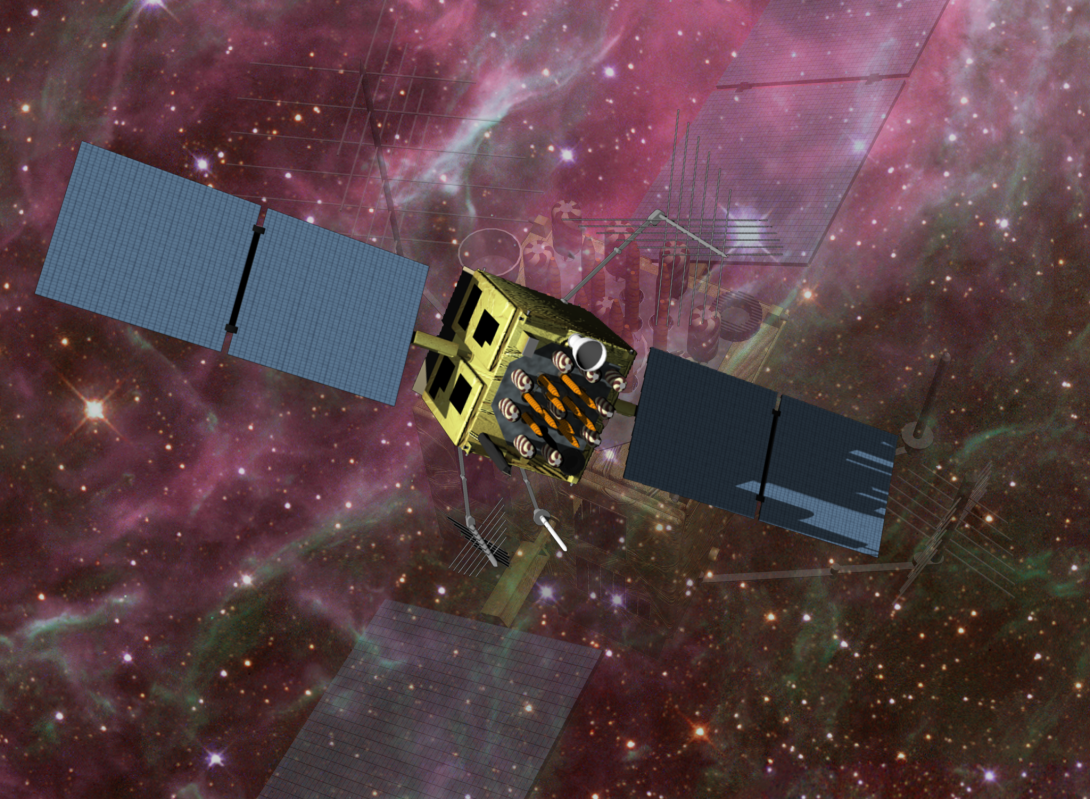Digital Twinning Takes Flight
The U.S. Defense Department is increasingly using digital replicas to make predictions about the performance of complex weapons systems such as satellites or jet engines and to train artificial intelligence how to fly high-performance aircraft.
Last year, the U.S. Air Force used this digital twin technology to assess the cyber vulnerabilities of global positioning system (GPS) satellites for the first time. Advocates say the same approach can be used in training artificial intelligence (AI) and can be employed for predictive maintenance to determine when vital parts of an engine might be at risk of failure.
“It’s not a new idea,” says U.S. Air Force Chief Scientist Richard Joseph. “To construct a model of a physical system and run a simulation that emulates how it actually works.” What’s changed is the ballooning amount of data available about the physical systems and, more importantly, the vastly increased computing power available to run digital simulations.
“With the development of computer technology we’ve been able to do a better and better job to get closer and closer fidelity to the actual performance of the system,” Joseph says.
The digital twin of the Lockheed Martin Block IIR GPS satellite, known as a SatSim, was built in 2018 for the Air Force Space and Missile Systems Center (SMC), in El Segundo, California, by a small team of engineers at Booz Allen Hamilton, according to a company summary of the project. The SatSim enabled vulnerability scans and penetration tests to be conducted on the whole GPS system, including the satellite itself, its ground control station and the radio frequency link between them.
The objective was an “end-to-end representation of the GPS IIR command and control system,” the summary says, to fulfill a congressional mandate in section 1647 of the National Defense Authorization Act of Fiscal Year 2016 to evaluate cyber vulnerabilities in every major weapons systems.
Booz Allen Hamilton executives referred questions about the results of the testing to SMC, which declined to discuss whether any new vulnerabilities were found.
Kevin Coggins, Booz Allen Hamilton vice president, says the company is using digital twin technology more and more at this kind of “intersection of cyber and operational technologies,” for instance in cyber-physical testbeds for aviation and maritime assets.
The technology means that Booz Allen can offer its customers “higher levels of mission assurance, more affordable design cycles, and rapid cybersecurity issue resolution,” says Coggins.
Digital twin technology also has been used to train AI to fly autonomous aircraft, Joseph explains. Appropriately for the Air Force, much of its value in this role comes from its speed. “The real key comes from the fact that we have systems today that can run much faster than real time,” he says. AI pilots can get thousands of hours of flight time on a digital simulation in a fraction of that time, learning in days what it takes a human pilot months to experience, he says.
In the past few years, the quantities of data about real products available as a result of the emerging Internet of Everything has exploded. Together with the improving capabilities of machine learning algorithms, this trend is driving digital twin technology toward a tipping point.
This tipping point for digital twins and for the algorithms that power them has been driven by the exponential growth in computer processing power described by Moore’s law, Joseph says. “We’ve had artificial intelligence like neural nets since the 1930s,” he points out, “but the hardware, the computer hardware, was not capable of running fast enough to be able to get useful answers.”
Digital twin technology has also been around for a while. NASA has been using software replicas of its spacecraft for decades. Some accounts suggest that the successful return of the 1970 Apollo 13 mission after an oxygen tank exploded was a result of the agency’s use of “mirrored systems” back on earth.
But the use of software models to facilitate product life-cycle management to make predictions about when parts might break down, for example, was first suggested in 2002 by Michael Grieves, then an academic at the University of Michigan. Grieves’ innovation understood how increased computing power and the then-nascent data available from networked and connected industrial devices could power better business processes, enabling decisions informed by data and powered by predictive algorithms.
In the commercial world, businesses such as Delta Airlines have used digital twin technology to power predictive maintenance, figuring out in advance when parts are likely to fail. Joseph says Delta attributes its industry-leading position in reliability to its use of predictive maintenance, and the Air Force is working with them to learn those lessons too.
GE Aviation also has embraced digital twin technology, and the Air Force can use it to squeeze time and money out of the sustainment process, says Lt. Gen. Sam Angelella, USAF (Ret.), vice president for military customer programs at GE Aviation.
“Imagine doing predictive maintenance rather than reactive maintenance or scheduled maintenance,” Gen. Angelella says. “As a commander in the field, I would know which engines I can maybe keep going past the 200-hour inspection, and which ones I might need to pull off a little sooner…. Imagine how much more efficient that could be.”
The market sees the tipping point too. Gartner listed digital twinning as one of its top 10 technology trends in 2017, and one estimate from Markets-andMarkets says that spending on digital twins will increase by almost tenfold from $3.8 billion in 2019 to $35.8 billion by 2025.
The automotive and transportation sectors will lead in this huge growth, MarketsandMarkets predicts, and indeed electric car company Tesla has taken the lead. The company creates a digital twin of every car it sells, keeping it updated with the data feeds from the real vehicle and using it to plan software updates and schedule other maintenance.
And digital twins of systems much larger than engines are now possible. NASA, which pioneered the technology in space, now employs digital twins on the ground. Powered by real-time geospatial information from satellites, agency managers maintain a constantly updated software replica of its 764-acre Langley Research Center campus in Hampton, Virginia, which has been used to make decisions about everything from repair schedules to office allocation.
Using that kind of technology and real-time geospatial information data, smart cities like the town of Cambridge in the United Kingdom are employing digital twins to better understand commuting patterns and explore ways to reduce traffic congestion and improve air quality.
The Defense Department is in some ways playing catch-up. “There will always be further to go,” Joseph says.
Shaun Waterman is an award-winning reporter and editor who has worked for the BBC, UPI and POLITICO. He is currently freelancing, covering federal information technology, cybersecurity and homeland security.






Comments